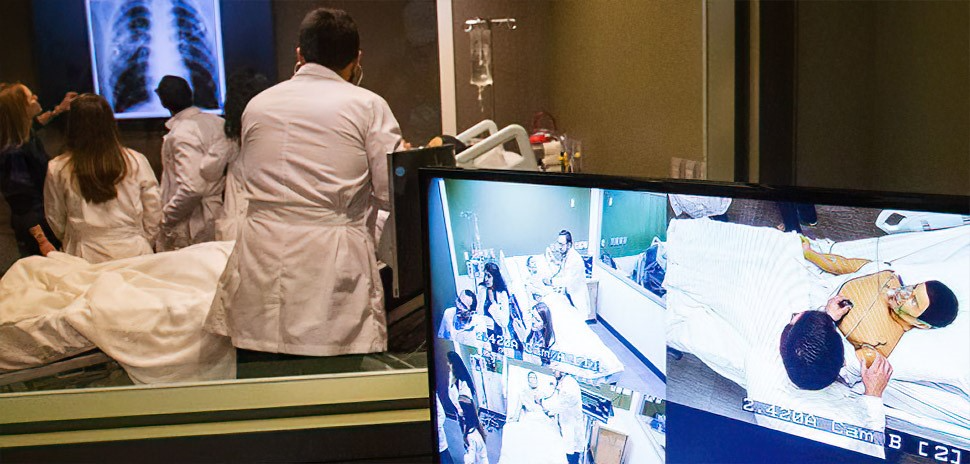Class is in session—but it may never go back to the way it was. AT&T’s 2021 Future of School Report says COVID has changed education forever, by making hybrid learning, virtual classrooms, and high-tech schooling permanent features of K-12 life.
Released today, the study surveyed 500 K-12 schoolteachers and 1,000 parents of K-12 students, identifying trends that are likely here to stay. One key finding: Despite a year of grumbles about virtual schooling, both teachers and parents believe it has value and want it to continue as needed.
Hybrid learning—a mix of both in-class and online instruction—has enormous support from teachers. 94 percent are open to the idea as long as they have the proper resources, curriculum, and support, the study shows.
Teachers also believe they should continue to teach kids virtually when needed:
• 71 percent support virtual days for bad weather
• 78 percent favor virtual tutoring or enrichment programs
• 60 percent are open to live-streaming their classrooms for sick kids at home
Those findings are consistent across all grade levels and both low- and- high-income schools, the study shows.
Parents see the value of virtual
Parents are even more open to virtual schooling:
• 83 percent support virtual bad-weather schooldays
• 84 percent want virtual tutoring
• 85 percent want their ailing kids to get schooled right from their sickbeds
Despite widespread vaccinations and falling COVID infection rates, two-thirds of teachers and parents say that “students are still learning either fully remotely or in a hybrid format.”
After a rocky rollout of lockdowns and teacher videoconferencing, the study shows “many have adapted to this new environment and learned tips, tricks, and best practices to navigate virtual classrooms,” with 83 percent saying they felt supported by new online teaching tech and strategies.
$7.17B FCC program will help students connect
Who will pay for all this edtech and virtual learning? The FCC is stepping up with its Emergency Connectivity Fund, a $7.17 billion program funded by the American Rescue Plan Act of 2021. The fund will help support “forward-looking connectivity for school districts,” with an overarching goal: closing the homework gap.
“The time is now to ensure innovative, personalized learning experiences for all learners,” said Christine Fox, the Consortium for School Networking’s senior director of external relations, in a statement. “The pandemic highlighted inequities in the educational system and the critical need for seamless access to high-quality, safe, digital learning opportunities to best prepare students for college and careers.”
The lack of adequate internet access for students, especially at home, is one of today’s hottest K-12 issues.
“Educators spent more time using technology in the last year than ever before and saw the benefits and opportunities that came with it,” said Ruthbea Yesner, Internatlonal Data Corp’s VP of government insights, education, smart cities, and communities, in the statement.
“As we think about the future of K-12, we expect to see an increase in the use of communication and digital tools—in and out of the classroom—and growth in hybrid learning,” Yesner said. “This means that addressing the homework gap will remain a real and significant challenge for equitable access, and it is imperative that every student has access to connectivity.”
Three key K-12 solutions
One way to close the homework gap: mobile connectivity. “Wireless services help ensure learning can continue outside the four walls of the classroom,” AT&T noted in its analysis, “helping schools keep students and teachers connected.”
But it’s not just about remote learning—technology inside schools will be key to the K-12 future. “High-capacity network infrastructure will play a significant role on campus and in the classroom,” AT&T’s analysis shows. “Access to communication tools and online resources will be the largest driver for additional bandwidth to support education platforms and conferencing applications. Unified voice and collaboration applications that are easy to use and can move on and off campus have become a necessity.”
All that access and all that data exposes big risks, from cyberattacks to the exposure of kids to harmful online content. So AT&T believes content filtering services, device management solutions, and data safeguards will be big essentials as schools embrace the future.
“We need to act now to ensure every school, teacher, and student has the connectivity they need to learn and thrive,” said Matt Hickey, AT&T’s VP of public sector marketing.
About the surveys
AT&T and TRUE Global Intelligence, the in-house research practice of FleishmanHillard, conducted the surveys for the Future of School Report. Two distinct online surveys were conducted among 1,000 U.S. consumers who self-identify as parents with at least one child currently enrolled in a K-12 school, and 500 U.S. schoolteachers who have been teaching full-time for at least two years. For the parents, the margin of error was +/- 3 percent at the 95 percent confidence level. For teachers, the margin of error was +/- 4 percent at the 95 percent confidence level. Both surveys were fielded from April 13-21, 2021.

































































